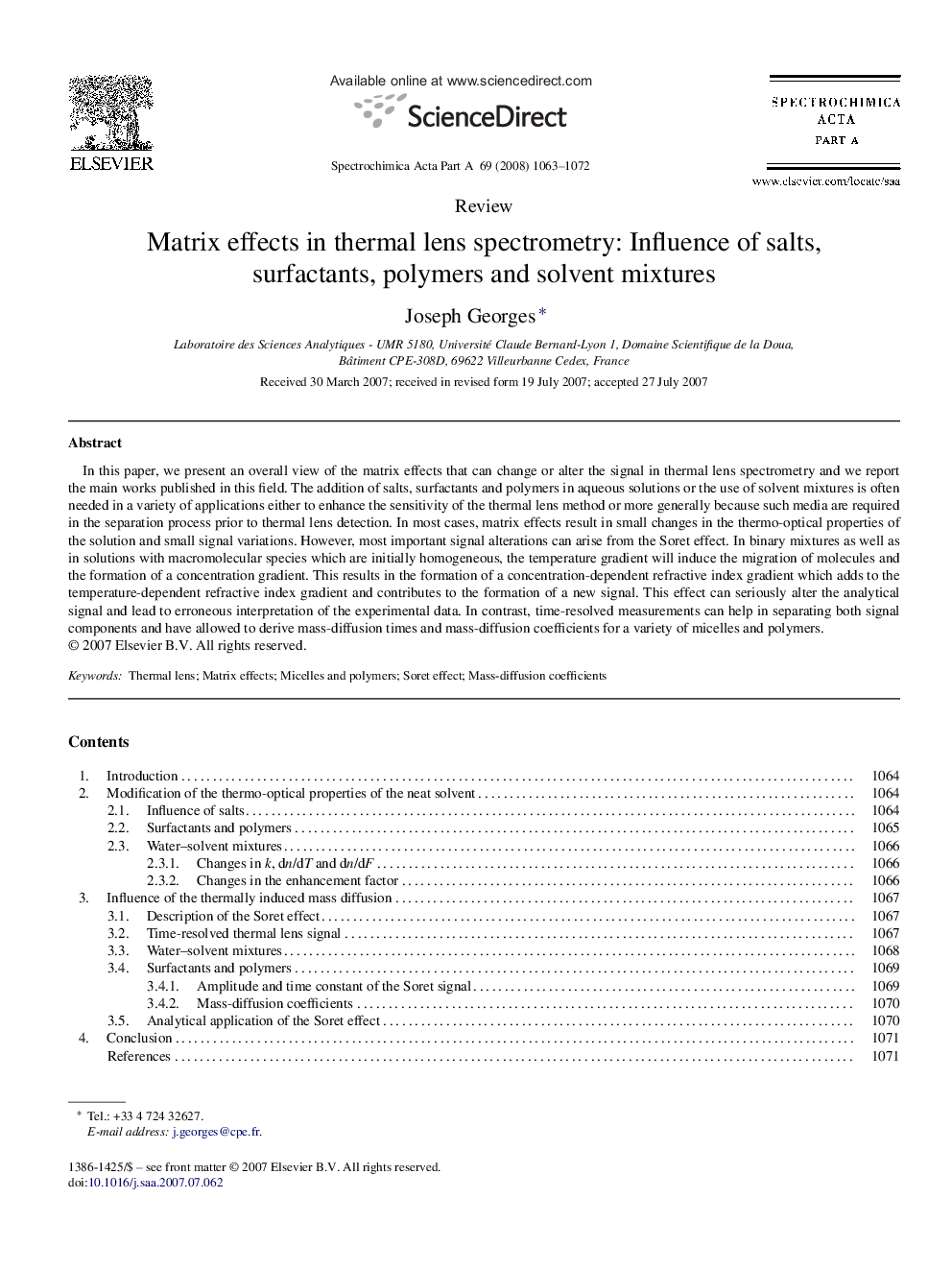| Article ID | Journal | Published Year | Pages | File Type |
|---|---|---|---|---|
| 1237783 | Spectrochimica Acta Part A: Molecular and Biomolecular Spectroscopy | 2008 | 10 Pages |
In this paper, we present an overall view of the matrix effects that can change or alter the signal in thermal lens spectrometry and we report the main works published in this field. The addition of salts, surfactants and polymers in aqueous solutions or the use of solvent mixtures is often needed in a variety of applications either to enhance the sensitivity of the thermal lens method or more generally because such media are required in the separation process prior to thermal lens detection. In most cases, matrix effects result in small changes in the thermo-optical properties of the solution and small signal variations. However, most important signal alterations can arise from the Soret effect. In binary mixtures as well as in solutions with macromolecular species which are initially homogeneous, the temperature gradient will induce the migration of molecules and the formation of a concentration gradient. This results in the formation of a concentration-dependent refractive index gradient which adds to the temperature-dependent refractive index gradient and contributes to the formation of a new signal. This effect can seriously alter the analytical signal and lead to erroneous interpretation of the experimental data. In contrast, time-resolved measurements can help in separating both signal components and have allowed to derive mass-diffusion times and mass-diffusion coefficients for a variety of micelles and polymers.
